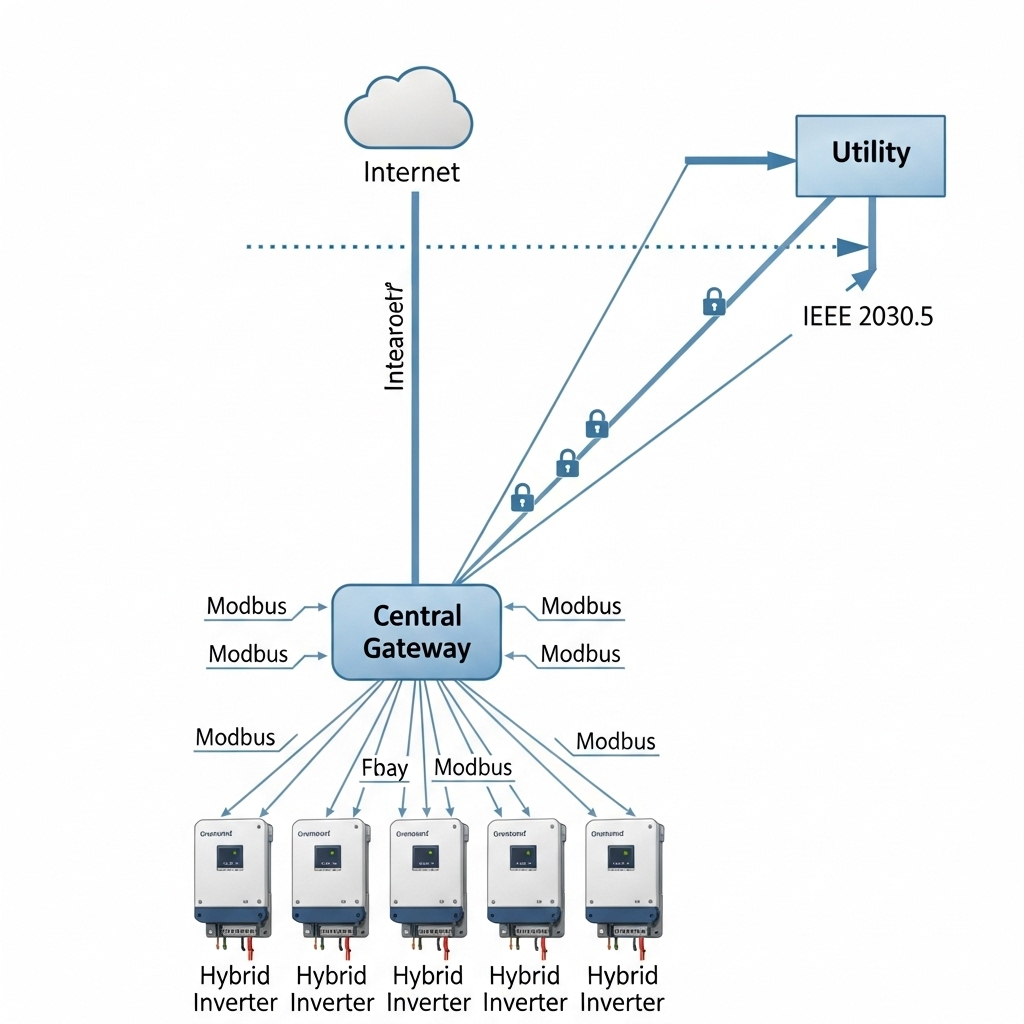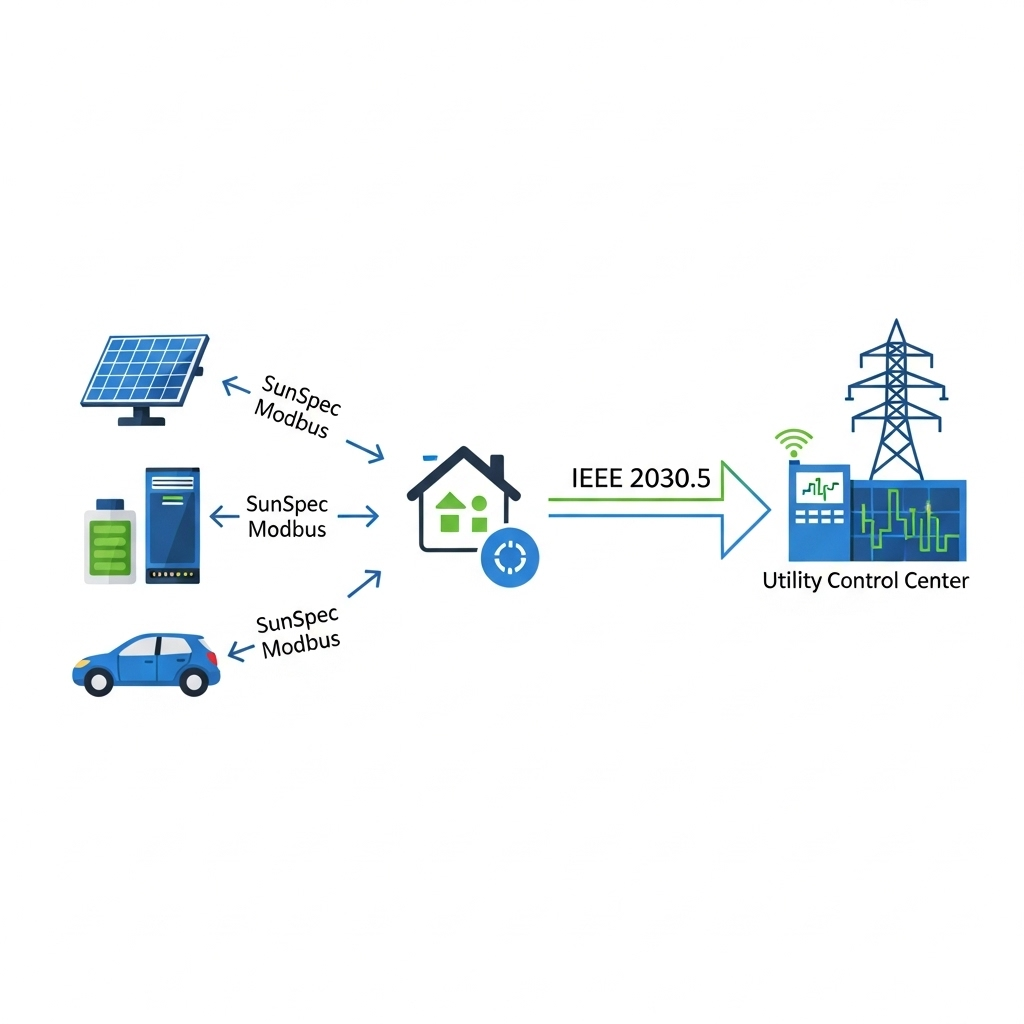The Battery Management System (BMS) is the brain of your Lithium Iron Phosphate (LFP) battery pack. It ensures safety, longevity, and optimal performance. But what acts as the nervous system, carrying critical information between the BMS, the inverter, and other components? That role belongs to the communication protocol. Choosing the right one is fundamental to building a reliable energy storage system. Two of the most common protocols you will encounter are CAN bus and Modbus. While both enable communication, they are designed with different philosophies and are suited for different applications.
Understanding the Role of Communication in a BMS
Before comparing protocols, it's helpful to appreciate why this communication is so vital for modern battery systems, especially those using LFP chemistry.
Why Your LFP Battery Needs a Smart BMS
LFP batteries are known for their exceptional safety and long cycle life compared to other lithium-ion chemistries. However, to fully realize these benefits, they require precise management. A BMS constantly monitors individual cell voltages, current flow, and temperature. It performs crucial tasks like cell balancing to ensure all cells in the pack age evenly, and it protects against over-charging, over-discharging, and extreme temperatures. As noted in an IEA report, The State of Energy Innovation, significant innovation in LFP technology, including advanced cell-to-pack configurations, relies on sophisticated data management that only a smart BMS can provide. This data needs a robust pathway to travel.
The 'Backbone': What is a Communication Protocol?
A communication protocol is essentially a set of rules and standards that devices use to speak the same language. In an energy storage system, the BMS needs to send real-time data—like State of Charge (SoC), State of Health (SoH), and any fault codes—to the inverter. The inverter, in turn, uses this information to decide when to charge or discharge the battery, how much current to use, and when to shut down for safety. This constant dialogue is the communication backbone of your system.
A Deep Look at Modbus for BMS Applications
Modbus is a veteran in the world of industrial communication. Its simplicity and long history have made it a common choice in many applications.
The Basics of Modbus
Developed in 1979, Modbus is a serial communication protocol that operates on a master-slave principle. In a typical setup, one device (the master, usually the inverter) initiates all communication. It sends requests to one or more slave devices (the BMS) and waits for a response. This polling process—master asks, slave answers—is the foundation of Modbus communication. The most common variants are Modbus RTU, which is used over serial lines like RS-485, and Modbus TCP/IP, which works over Ethernet networks.
Strengths and Weaknesses of Modbus in an LFP System
The primary strength of Modbus is its simplicity. It is relatively easy to implement and troubleshoot, and the hardware required is often less expensive. Its widespread use in industrial controls means many technicians are familiar with it. However, its master-slave, polling-based nature presents drawbacks for modern energy storage. The process can introduce latency, as the master must poll each slave device sequentially. It is also less resilient to electrical noise and lacks a built-in mechanism for message prioritization, which can be a concern in systems where immediate fault reporting is critical.
Exploring CAN bus: The Automotive Standard
CAN bus (Controller Area Network) was developed in the 1980s for the demanding environment of the automotive industry. Its design prioritizes reliability and real-time performance.
What is CAN bus?
Unlike Modbus, CAN bus is a multi-master, message-based protocol. This means any device (or 'node') on the network can broadcast a message when it needs to. There is no single master controlling the conversation. Instead, messages are broadcast to all nodes, and each message has an identifier that determines its priority. If two nodes try to transmit at the same time, the higher-priority message automatically wins access to the bus without any data being lost. This process, called arbitration, makes CAN bus extremely efficient and reliable for real-time control.
Advantages and Disadvantages of CAN bus for BMS
The key advantages of CAN bus are its high speed, exceptional reliability, and immunity to electrical noise. Its event-driven nature means data is sent instantly when a change occurs, rather than waiting to be polled. This reduces network traffic and ensures that critical alerts are handled immediately. The protocol also features robust error detection and confinement mechanisms. The main disadvantages are its higher implementation complexity and the slightly higher cost of its transceivers. For a very simple, single-battery system, its capabilities might be more than what is strictly necessary.
Head-to-Head Comparison: CAN bus vs. Modbus
Choosing between the two protocols becomes easier when their features are laid out side-by-side. The following table provides a direct comparison of their key attributes.
| Feature | Modbus | CAN bus |
|---|---|---|
| Topology | Master-Slave (Polling) | Multi-Master (Event-Driven) |
| Speed | Lower (typically 9.6 kbps to 115.2 kbps) | Higher (up to 1 Mbps) |
| Reliability & Noise Immunity | Moderate; susceptible to noise without proper shielding | High; designed for harsh electrical environments |
| Data Transmission | Master requests data from slaves | Any node can broadcast data based on priority |
| Implementation Complexity | Low; simple to implement and debug | Moderate to High; more complex protocol stack |
| Cost | Lower hardware cost (RS-485 transceivers) | Higher hardware cost (CAN transceivers) |
| Ideal Application | Simple industrial monitoring, non-critical data logging | Real-time control, automotive, complex energy storage systems |
Performance in Real-World Scenarios
In a typical residential energy storage system, a CAN bus interface allows for tighter integration between the BMS and a hybrid inverter. This enables faster response to grid conditions or changes in solar production. For larger commercial or off-grid systems where multiple battery packs may be connected in parallel, the multi-master and robust nature of CAN bus is clearly superior for coordinating all the components safely and efficiently. For a small, straightforward DIY project focused only on monitoring a single battery, the simplicity and low cost of Modbus can be an attractive and perfectly adequate solution.
Making the Right Choice for Your System
Your decision should be based on a clear understanding of your system's requirements, both now and in the future.
Factors to Consider
Ask yourself a few key questions. How complex is your system? Is real-time control of charging and discharging essential? Will the system operate in an area with potential electrical interference? Your answers will point you toward the right protocol. As power systems evolve, the need for more intelligent and responsive components grows. The IEA report Empowering Variable Renewables: Options for Flexible Electricity Systems notes that future power management will require system elements to be more interchangeable and responsive, a capability that advanced protocols like CAN bus inherently support.
The Importance of System Integration
Ultimately, the most critical factor is compatibility. The communication protocol supported by your inverter will often dictate your choice of BMS. Attempting to mix and match protocols usually requires a gateway device, which adds cost, complexity, and another potential point of failure. A comprehensive understanding of how different components interact is vital. For instance, achieving peak solar storage performance often depends on seamless communication between the battery and the inverter, a topic detailed in this ultimate reference on solar storage performance. The intricate data exchange needed for smart energy management, similar to what is described for electric vehicles in IRENA's Innovation Outlook: Smart charging for electric vehicles, relies on a powerful communication backbone.
Final Thoughts
To summarize, Modbus is a simple, proven, and cost-effective protocol well-suited for basic monitoring tasks. CAN bus is a more modern, robust, and high-performance protocol designed for real-time control in complex and demanding environments. While the best choice is always context-dependent, the trend in modern energy storage is clear. For building a scalable, reliable, and future-proof LFP energy storage system, CAN bus provides a superior foundation that ensures safety and maximizes performance.
Disclaimer: This article is for informational purposes only. It does not constitute professional engineering or financial advice. Always consult with a qualified professional before designing or installing an energy storage system.
Frequently Asked Questions
Can I use a Modbus BMS with a CAN bus inverter?
Generally, no, not without a protocol converter or gateway. These devices translate between protocols but can add complexity, cost, and a potential point of failure. It is best to match the protocols of your BMS and inverter from the start for seamless integration.
Is CAN bus more expensive than Modbus?
The hardware components for CAN bus are typically more expensive than those for Modbus RTU. However, in the context of a complete system, this cost difference is often minimal compared to the overall investment. The added reliability and performance of CAN bus can easily justify the small premium.
Which protocol is better for a DIY solar project?
For a simple project with basic monitoring needs, Modbus is often sufficient and easier for beginners to implement. For a more advanced DIY system, especially one aiming for high efficiency and seamless integration with a modern hybrid inverter, investing the time to learn and implement CAN bus is highly recommended.
Why is LFP the focus for these communication protocols?
LFP (Lithium Iron Phosphate) batteries have become a leading choice for stationary energy storage due to their safety, long cycle life, and cost-effectiveness. A sophisticated BMS is critical to maximizing these benefits, and the communication protocol is the core of that BMS, making the CAN vs. Modbus decision particularly relevant for LFP packs.





Leave a comment
All comments are moderated before being published.
This site is protected by hCaptcha and the hCaptcha Privacy Policy and Terms of Service apply.